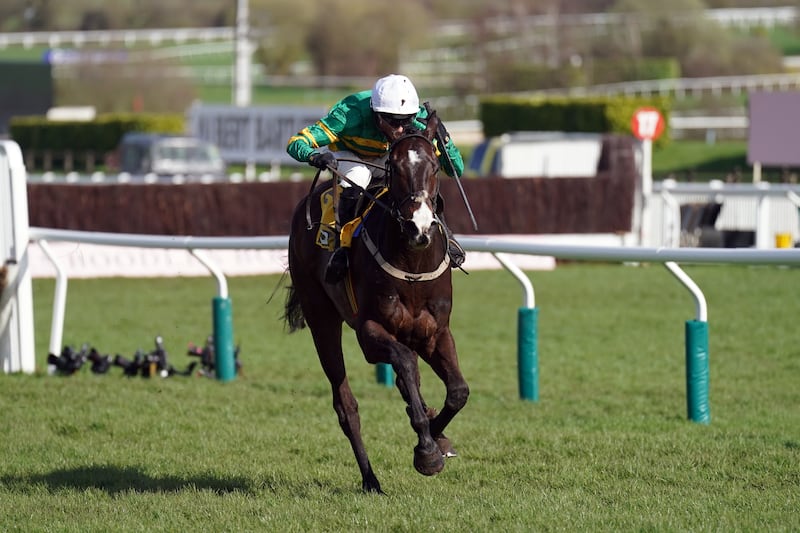We all know the story of supersonic commercial flying — the most far-fetched aviation true story of the 20th century — which allowed the wealthy jet-set to fly faster than a bullet and higher than anyone but astronauts, all while sipping champagne in their shirtsleeves. Only two supersonic passenger aircraft were ever successfully built — the Anglo-French Concorde and the Soviet Tupolev Tu-144. The 144 was a failure thanks to being both unsafe and stupendously noisy in the cabin. Concorde worked, though. While supersonic military pilots wore G-suits and pressurised helmets, Concorde’s passengers were clad in Gucci and Armani.
It all went horribly wrong, of course. Long before the sheer cost of running British Airways and Air France’s tiny fleet of 14 Concordes became too high, long before the tragic disaster at Charles de Gaulle airport, Concorde had been scuppered by its boom. Stung by the failure of supersonic passenger plane projects from Boeing and Douglas, the US authorities used the excuse of concerns about noisy sonic booms and made supersonic flight over land illegal, confining Concorde to flying at full speed only over water. In 2003, the ageing airliner was retired, and civil aviation slumped into a sub-Mach, twin-jet, wide-body apathy.
Now, though, things might be changing, and airlines are starting to pay real deposits on a potential future fleet of supersonic passenger aircraft. This new generation of faster-than-sound aeroplanes should be able to bypass the noise pollution issues that hobbled Concorde.
In 2018, Nasa began test flights to find out if people on the ground could be amenable to a lower-volume sonic “thump” rather than boom. The theory goes that new aerodynamic and engine designs could allow for supersonic speed with much less noise. Flights at Mach 1.4, or about 1,730km/h, can potentially produce a noise at ground level of around 75 PLdB (perceived levels of decibels), as compared to Concorde’s old Mach 2.4 with between 105 and 110 PLdB. If the residents of Galveston, Texas, over whom these flights were conducted, return a sufficiently sanguine response, then the American Federal Aviation Authority (FAA) will push ahead will plans to legalise supersonic overflight of US territory.
Ireland may well follow suit. A spokesperson for the Irish Aviation Authority (IAA) said the potential for supersonic overflight of Ireland was down to just how clever the new aircraft designs may be. “The future of supersonic flight is potentially very exciting and heavily dependent on the creativity and ambition of the aircraft manufacturers,” said the IAA. “As per standard procedure regarding the assessment of aircraft, the IAA and its partners in EASA [the European Aviation Safety Agency] would review and assess any new designs to ensure they comply with the strict aviation safety requirements should an application be made.”
As Ireland follows where the EASA leads, so too does the European authority usually follow and work with that done by the US FAA. Graham Warwick, from Aviation Week magazine, told The Irish Times: “As the FAA and EASA participate in the creation of ICAO [International Civil Aviation Organization] standards, they will be expected to adopt the standards and allow flights. Congress has directed the FAA to proceed with developing a national standard for landing and take-off noise. EASA is not obliged to accept that, but usually they would, would be expected to lead to a harmonised standard that both the FAA and EASA can live with. The International Civil Aviation Organisation is working to develop noise standards for supersonic aircraft by around 2025. These standards will enable noise certification — cruise sonic boom and landing and take-off noise — for supersonic aircraft designs.”
Boom’s plan is simply to make its aircraft sufficiently quiet that they won’t bother anyone on the ground, following Nasa’s research lead
Those new designs were, at one point, coming thick and fast. Companies such as Aerion Supersonic and Spike Aerospace started developing small, high-cost supersonic business jets for the corporate market, designed to fly at between Mach 1.4 and 1.6, which is in the sweet spot for that low-impact noise pattern. Aerion wound up in 2021, though, unable to secure the investments it needed. Spike Aerospace seems to be in a holding pattern.
Boom Supersonic, however, is still going. It wants to build a relatively affordable commercial airliner, which would almost match Concorde for speed, at Mach 2.2, more than 2,700km/h (those figures are the speed at sea level but such are the vagaries of aerodynamics, the actual speed would be lower at high altitude). Such speed would cut the journey time from London to New York from the fastest subsonic time of five hours and 13 minutes (set in January 2019 by a Norwegian Boeing 787 which picked up a mighty tailwind as it crossed the Atlantic) to a Concorde-like three hours and 15 minutes.
Boom is in the process of building a small demonstrator aircraft, dubbed the XB-1, which it plans to fly later this year as a proof of quiet supersonic concept aircraft. If that’s successful, then it will begin work on its full-size aircraft, called the Overture. While Aerion and Spike’s plans to design aircraft that eliminate any sonic boom flopped, Boom’s plan is simply to make its aircraft sufficiently quiet that they won’t bother anyone on the ground, following Nasa’s research lead.
Boom is not short of investment, either. In 2019, the company completed a $100 million (€100.8 million) Series B investment round, attracting cash from the likes of Google, Airbnb, Stripe and Dropbox, which probably gives you a good idea as to the Overture’s likely passenger manifest. “This new funding allows us to advance work on Overture, the world’s first economically viable supersonic airliner,” said Blake Scholl, founder and chief executive of Boom Supersonic. “At Boom, our vision is to remove the barriers to experiencing the planet. Today, the time and cost of long-distance travel prevent us from connecting with far-off people and places. Overture fares will be similar to today’s business class — widening horizons for tens of millions of Travellers. Ultimately, our goal is to make high-speed flight affordable to all.”
Boom has certainly struck a chord with airlines, a chord sufficiently big to have them dipping into their pockets for orders. American Airlines has announced that it has paid a non-refundable deposit on an order for 20 Boom Overtures, while Japan Airlines and United Airlines have also placed orders (although apparently not yet deposits). Boom estimates that the cost of each finished Overture will be in the region of $200 million each; that’s significantly less than the official list price of an Airbus A350 wide-body airliner, but then few commercial aircraft are sold without a significant discount.
Whatever about the noise concerns, hitherto going faster than the speed of sound has involved using copious amounts of fuel. Concorde used four large Rolls-Royce/Bristol Olympus jet engines, with military-style afterburners (where extra jet fuel is injected directly into the engine’s exhaust, giving it a huge extra kick of power), which are very, very far removed from the ultra-efficient, high-bypass jet engines of modern passenger aircraft.
A report on the potential reintroduction of supersonic passenger flights, carried out by the International Council for Clean Transport (ICCT) noted: “Increasing CO2 emissions from these aircraft could make it even more challenging for industry to achieve its climate goals. Additional research is needed to improve our understanding of the environmental implications of reintroducing supersonic flight. Likewise, a comprehensive analysis of the climate impacts of these aircraft is recommended. Non-CO2 climate forcers, including water vapour, nitrogen oxides, black carbon and aviation-induced cloudiness are expected to be significant given the high cruise altitude of supersonic transports.”
Cost, noise, environmental impact and whether the flying public cares enough to pony up for a faster flight are all questions with indeterminate answers
Boom, as yet, has not announced an engine partner for the project and that is a very big Rubicon to cross. The efforts of big aircraft engine suppliers such as Rolls-Royce and General Electric are focused, right now, on reducing emissions, improving fuel economy, developing hybrid and fully electric power plants, and moving towards sustainable fuels. On the issue of climate change, Boom has said that the Overture is designed to run on “100 per cent sustainable fuels” and that it will “incorporate sustainability from day one”. Scholl has said that “Our vision is to make the world more accessible. It’s fundamental that we take great care of it, too.”
There are a multitude of hurdles between now and the resumption of hyper-fast flight transport. Cost, noise, environmental impact and whether the flying public cares enough to pony up for a faster flight are all questions with indeterminate answers. However, the likes of Boom and Scholl seem determined to press ahead, and the chief executive is adamant that passenger flights will begin before the end of this decade.
Many have noted that the grounding of Concorde was the first time in human evolution that we made a conscious decision to slow down, to retreat from a frontier of faster travel. Perhaps we can now start speeding up again.









